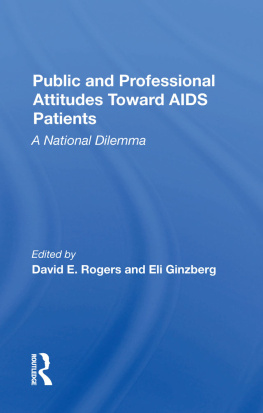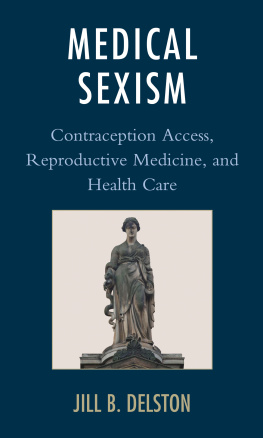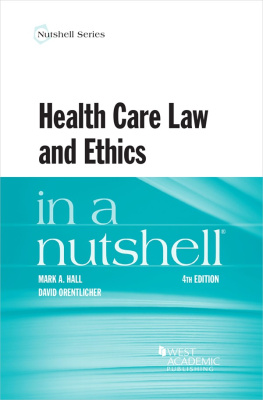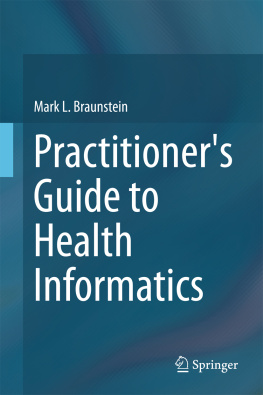Medical Care and the Health of the Poor
First published 1993 by Westview Press
Published 2018 by Routledge
52 Vanderbilt Avenue, New York, NY 10017
2 Park Square, Milton Park, Abingdon, Oxon OX14 4RN
Routledge is an imprint of the Taylor & Francis Group, an informa business
Copyright 1993 by Cornell University Medical College
All rights reserved. No part of this book may be reprinted or reproduced or utilised in any form or by any electronic, mechanical, or other means, now known or hereafter invented, including photocopying and recording, or in any information storage or retrieval system, without permission in writing from the publishers.
Notice:
Product or corporate names may be trademarks or registered trademarks, and are used only for identification and explanation without intent to infringe.
Library of Congress Cataloging-in-Publication Data
Cornell University Medical College Conference on Health Policy
(8th: 1992: New York, N.Y.)
Medical care and the health of the poor / Cornell University
Medical College Eighth Conference on Health Policy : edited by David
E. Rogers and Eli Ginzberg.
p. cm.
Conference held in New York, N.Y., in 1992.
Includes bibliographical references and index.
ISBN 0-8133-1720-7
1. PoorMedical careUnited Stateongresses. 2. PoorHealth
and hygieneUnited Statongresses. I. Rogers, David E. (David
Elliot), 1926. II. Ginzberg, Eli, 1911. III. Title.
[DNLM: 1. Health Policy-congresses. 2. Health Services
congresses. 3. Medicallndigencycongresses. 4. Poverty
congresses. W 250C814m 1992]
RA418.5.P6C68 1992
362.10425dc20
DNLM/DLC
for Library of Congress
92-49555
CIP
ISBN 13: 978-0-367-00763-8 (hbk)
Contents
, David E. Rogers
, Eli Ginzberg
, Victor R. Fuchs
, Paul Starr
, Margaret A. Hamburg
, Douglas Black
, Nicole Lurie
, Mary E. Charlson, John P. Allegrante, and Laura Robbins
, C. Arden Miller
, Diane Rowland
, David E. Rogers
Guide
David E. Rogers
Over the past eight years, a series of conferences held at Cornell University Medical College have focused attention on certain problems causing serious pain on the U.S. health care scene. The format of these conferences has been straightforward. A small group of distinguished individuals who have spent their professional lives working on the topic under examination have written provocative papers articulating the issues, their thoughts on what caused the problem, its magnitude, and potential ways to mute or solve it. Those papers have then been circulated to a small but diverse group of equally knowledgeable and committed folk from a panoply of disciplines. Both speaker and participants have then come together at Cornell for a vigorous two-day give-and-take. This has resulted in a short book on the subject that generally contains recommendations for action to address the problem more forcibly.
The conferences, and the publications resulting from them, have been well received and seem to be commanding increasing national attention. The topics reviewed over this period have opened a window on where we are doing poorly as a nation. They have included looks at physician supply, clinical decisionmaking and social values, problems relating to the AIDS epidemic, and most recently the burgeoning hazards that beset high-risk children and adolescents and interfere with their chances of becoming healthy adults.
This year we decided to focus on a deceptively simple issue often felt to be the root cause of the depressing U.S. showing in many indices of health. We titled this conference Medical Care and the Health of the Poor. I state the title because it was chosen with some care. Although it has long been known that there is a strong and compelling correlation between being poor and being sick, beyond this obvious point causality relationships quickly get murky. To address these relationships, we asked several thoughtful observers of the issues surrounding this correlation to bring us some data. Just how tight is this correlation? Which comes firstpoverty or ill health? Which most improves healthincome enhancement or more medical care? How does poverty affect access to medical services? More to the point, if a person gets to those services, is health improved or infirmity avoided? How does schooling, housing, occupation, nutrition, or race fit into the picture?
All of our participants have spent considerable amounts of their adult lives working on different facets of this problem. As a matter of fact, I calculated that more than 700 years of collective professional experience regarding these linkages were in the heads of those who participated in the conference.
The dialogue was full of depth and intensity. I hope you, the reader, enjoy the following chapters, Dr. Ginzbergs overview, and my summation of where we left this subject.
Eli Ginzberg
The chapters that follow reproduce the seven invited papers that were prepared for the Cornell University Medical College Eighth Conference on Health Policy on the theme medical care and the health of the poor. reproduces the speech delivered by the newly appointed commissioner of health in New York City, Dr. Margaret Hamburg, and the book concludes with a summation on the conference by the co-convener, Dr. David Rogers, who emphasizes the policy directions that emerged from the two-day discussion. Despite some differences in emphasis and interpretation, the conferees were in broad agreement as to the directions for policy initiatives.
In this overview chapter I have set myself the task of informing the reader about the principal issues on which the conferees centered their attention, taking care to note both the broad areas of agreement and the issues about which differences were not fully resolved. This overview and the subsequent chapters follow the order in which the several presenters delivered their papers.
Victor Fuchs begins by raising incisive questions about the relationship between poverty and health. He points out the conceptual difficulties one encounters in defining the term poverty; what measures of health should be employedmorbidity, mortality, or disability; how such measures differ among age groups in the same country and among countries; and whether the relationship between poverty and health is mediated by such factors as individual differences regarding time preferences and self-efficacy.
Fuchs goes on to raise additional policy questions such as the correlation between specific aspects of poverty and poor health. Do the poor suffer more morbidity and higher mortality because they are unable to obtain ready access to the health care system and quality care? Or is their inferior health status more a reflection of inadequacies in nutrition, housing, and neighborhood conditions? Fuchs also emphasizes the tensions that exist in a democracy such as ours among the drive to greater equity, the resistance of the public to higher taxes, and the societal necessity to pay attention to efficacy in the use of scarce resources.
Paul Starr looks at the politics of health care inequalities. The issue at hand could be reformulated as, How much inequality in health care can a democratic society tolerate, and how much inequality in access to health care should responsible citizens in a democracy accept? Starr remarks that most democratic societies have not necessarily committed themselves to broad-based universalism; rather, they have been willing to tolerate a considerable degree of inequality in the provision of medical care to different classes. He believes that a reasonable degree of inequality of access can be consistent with the democratic ethos so long as the poor are part of the same broad system of health care available to the rest of the society, even if the wealthy have the option of using their own money to obtain extra care. Starr concludes that if the poor are part of the mainstream system of care, they will enjoy the basic protection against illness that should be available to all citizens in a democracy.








